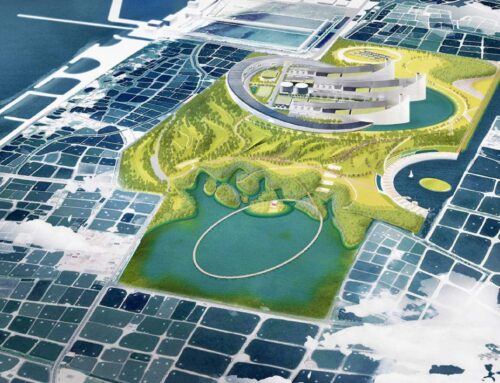Humans Are Evolving Too Slowly for the Environment We Built
November 28, 2025

For most of us, cities have become the natural habitat. But according to researchers Daniel Longman and Colin Shaw, our bodies are still operating as if we live in the wild.
“For most of human history, our biology was shaped by natural environments, but industrialization has rapidly transformed the world around us—faster than our bodies can adapt,” said Longman, a human evolutionary physiologist at Loughborough University, in an interview with Newsweek.
Their new paper, published in Biological Reviews, proposes what they call the Environmental Mismatch Hypothesis: the idea that Homo sapiens, evolved to thrive among forests, open savannas, and intermittent stress, has been thrust into concrete ecosystems that keep our stress systems switched on and our health faltering.
“In our ancestral environments, we were well adapted to deal with acute stress to evade or confront predators,” explained Colin Shaw, of the University of Zurich. “The lion would come around occasionally, and you had to be ready to defend yourself—or run. The key is that the lion goes away again.”
Today, the “lions” never leave.
Commuting through gridlock, managing overflowing inboxes, doom-scrolling social media, and enduring artificial light all trigger the same ancient biological alarm. “Our body reacts as though all these stressors were lions,” said Longman.
This constant activation of the stress response, the authors argue, leads to cascading effects: heightened anxiety, disrupted sleep, elevated blood pressure, impaired immunity, and declines in fertility. “Day-to-day, chronic background noise, crowds, traffic, digital overstimulation and limited access to natural spaces keep the stress response system switched on,” Longman stated. “These daily stressors accumulate and have real biological consequences.”
This affects you more than you’d think. Walking through a busy city street for less than an hour degrades performance on memory and attention tasks compared to walking through a forest. Fine particulate matter from air pollution breaches the blood-brain barrier, triggering inflammation and cognitive decline.
“Whether it’s work stress or traffic noise, your stress response system is still the same as if you were facing lion after lion,” Longman said. “As a result, you have a very powerful response from your nervous system, but no recovery.”
This constant activation of the fight-or-flight response does more than just ruin your mood. It creates a cascade of biological failures, including heightened anxiety, hypertension, and disrupted sleep.
Even our ability to reproduce is taking a hit. Birth rates are dropping globally, and while economic factors play a role, biology is struggling to keep up.
“One well-documented example is the global decline in sperm count and motility observed since the 1950s,” said Shaw. “This is believed to be tied to pesticides and herbicides in food, but also to microplastics.” And that’s not even considering economic stressors.
Our immune systems are also confused. The so-called Old Friends Hypothesis suggests that for millennia, humans coexisted with soil microbes and parasites that helped regulate our immune defenses. Modern, hyper-sanitized environments deprive us of these “training” exposures. Without them, our immune systems are more likely to misfire, fueling the modern rise in allergies and autoimmune diseases. “Inadequate immune function can directly reduce fitness by compromising survival,” the authors write.
For hundreds of thousands of years, humans adapted biologically to their surroundings. We can continue to do so. But the problem today is speed.
“Biological adaptation is very slow. Longer-term genetic adaptations are multigenerational—tens to hundreds of thousands of years,” said Shaw.
Industrialization, by contrast, has transformed the human habitat in mere centuries (or in some cases, decades). We are essentially Stone Age biology trying to survive in a Space Age world. Relying on natural selection to fix this mess would be catastrophic.
“You could argue that what we’re seeing today is a form of natural selection,” Shaw told New Atlas. “But letting chronic stress kill people for hundreds of generations until we evolve resistance is clearly not a solution.”

The species isn’t doomed, but we do need to change our strategy. If our bodies can’t adapt fast enough, our cities must change instead.
“Urban living is our future,” said Longman. “The challenge is to design cities that work with human biology, not against it.”
That means rethinking green space not as luxury but as medicine. “One approach is to fundamentally rethink our relationship with nature—treating it as a key health factor and protecting or regenerating spaces that resemble those from our hunter-gatherer past,” Shaw said. “Our research can identify which stimuli most affect blood pressure, heart rate or immune function, and pass that knowledge on to decision-makers.”
The United Nations projects that nearly 70% of the global population will call a city ‘home’ by 2050. We aren’t going back to the savanna, so the savanna must come to us. Shaw insists that ‘re-wilding’ our concrete jungles isn’t just about aesthetics; it is a public health necessity. By breaking up the gray monotony with green corridors, rooftop gardens, and living walls, we can trick our ancient nervous systems into relaxing.
It’s a massive effortt, but Shaw says it’s worth it. “Those with the resources—financial or intellectual—have a responsibility to invest them in solving these problems,” he said. “To me, it’s a moral imperative to do the right thing.”
Tags: green cityhuman evolutionstressurban environment
Search
RECENT PRESS RELEASES
Related Post




